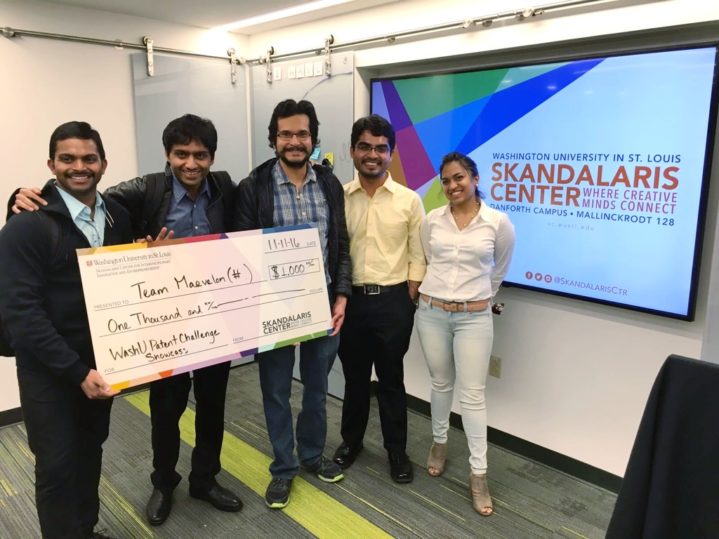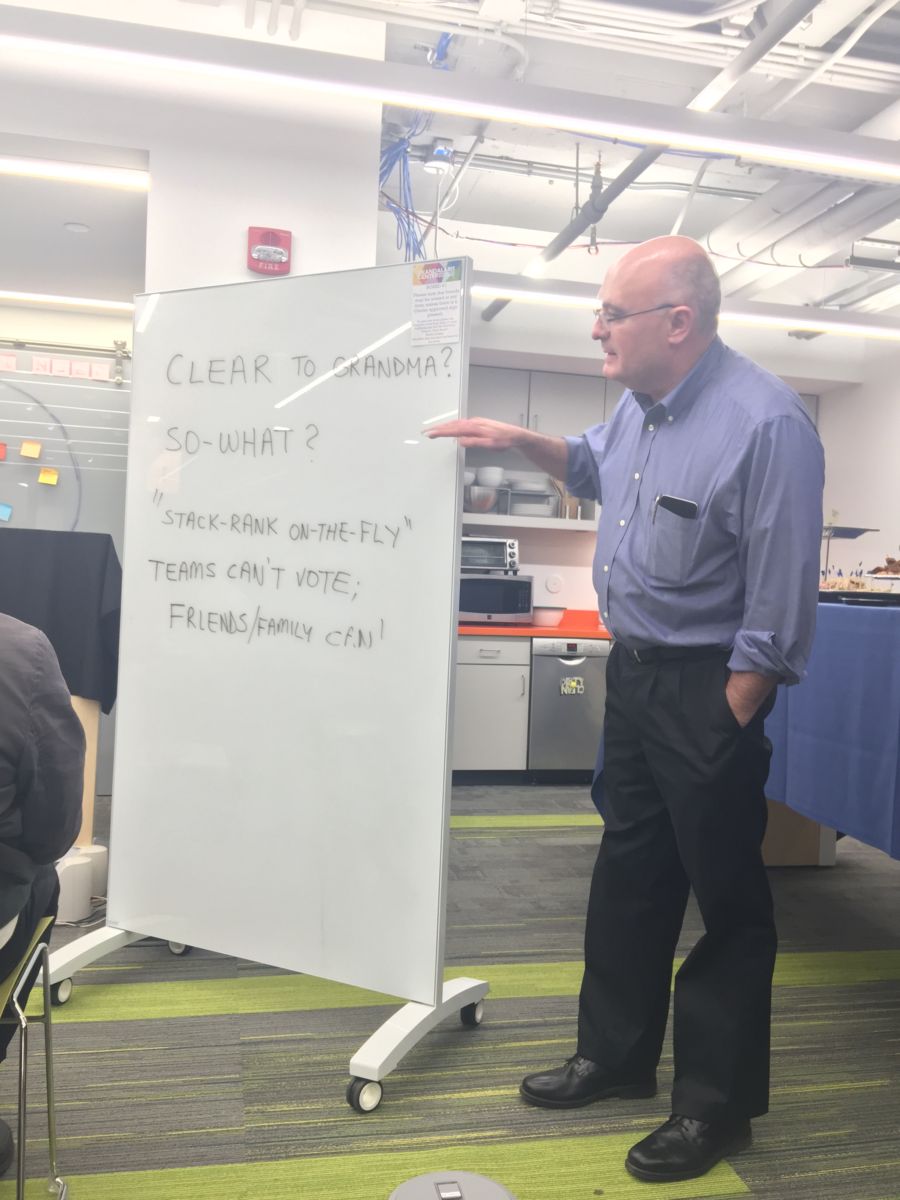
Presented by Washington University in St. Louis (WUSTL) for
7 Teams Compete for Washington University Patent Challenge Showcase Prize
WashU's Patent Challenge enters Phase 2. Here's who took home the Phase 1 prize–and what happens next.
On Friday, November 11, seven teams each made up of Washington University students from at least three different schools, presented their entries for Phase 1 of the WashU Patent Challenge at the Skandalaris Center on Washington University’s Danforth Campus. The WashU Patent Challenge is a combined effort between the Skandalaris Center and the Office of Technology Management and builds on the Boeing Patent Challenge concept introduced in 2015, in which student teams expand on existing Boeing Patents. In this new competition, teams are challenged to build venture concepts using existing WashU patents.
The Patent Challenge consists of two phases. The first phase began in September and took place over the fall semester. Students translated existing WashU patents into terms “understandable to Grandma,” as Skandalaris Center for Interdisciplinary Entrepreneurship Managing Director Emre Toker put it. Winners from both phases of the competition receive monetary prizes.
Teams presented patents that detect sleepiness, offer nanoparticle delivery of chemotherapy, use magnets to adjust the type of light that materials absorb, and other ideas in attempts to leverage existing WashU patents to create businesses and improve lives. Members of the audience voted on the presentations, ultimately determining the winner using ballots found on chairs in the Center. Phase 2 will take place over the spring semester and tasks participants to build venture concepts based on the patents that can be commercialized.
The winner of Phase 1, Team Marvelon, received a $1,000 prize for their invention, Metamaterials with Enhanced Nonlinearity, which promised real shape-shifting and invisibility materials as represented in the Terminator and Harry Potter movies.
A Winning Combination
The five members of Team Marvelon represented four different schools at WashU and met through a variety of social and academic circles. Sonali Gupta, who is completing a JD from Washington University School of Law this year, delivered her team’s presentation.
“My favorite part of this competition was the fact that I got to involve myself in learning scientific concepts, flash animations and marketing strategies and combine that with my knowledge of effective communication and presentation skills all while making new friends,” she says. “It was also comical to see the scientists squirm when the architect and I attempted to relay back to the scientists our understanding of a highly sophisticated and extremely complicated scientific process in baby English and stick figure drawings.”
The team’s architect was Nitish Bhat, working on a Master of Architecture at Sam Fox School of Design and Visual Art. Bhat said, “For me the best part of the competition was figuring out simple ways by which to communicate technical information to a non-technical audience. The communication design aspect of this was what interested me the most in the project.”
Sri Harsha Kondapalli, working on a PhD in Electrical and Systems Engineering at the Engineering School of Applied Sciences, said, “Brainstorming, tearing apart a complicated topic to explain to a grandma, lots of stories and a little bit of hard work at night summarizes our preparation for the competition.” Dasrhit Mehta, working on a PhD in Biomedical Engineering also at the Engineering School agreed with Kandapalli and says, “I found the process of simplifying a complex idea to its very basics extremely rewarding.”
S. Kumar Mallavarapu, completing a PhD in Physics in the School of Arts and Sciences this year says, “As a physicist, phenomena related to light has always fascinated me. In fact, the process of trying to obtain a deeper understanding of how optics works has led to several breakthroughs in the field of physics and continues do so. The fact that our team has been successful in sharing this excitement with wider sections of our society is a highly satisfying feeling in itself. Therefore, not just the scientist, but a whole lot of other people also got a chance to sight light in flight and gain insight.”
Team Marvelon is waiting to complete Phase 2 to determine what to do with their $1,000 prize from Phase 1. Phase 2 will consist of teams creating commercialization plans for their chosen invention. An additional $9,000 in prizes will be given away to Phase 2 winners, which will be chosen in April.
Read more about the WashU Patent Challenge on WashU Fuse.

